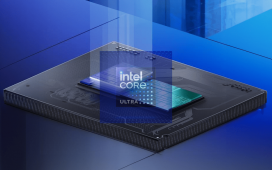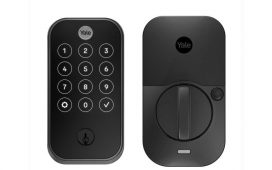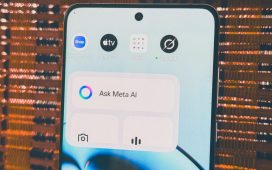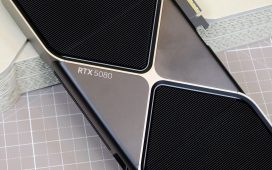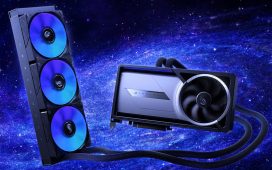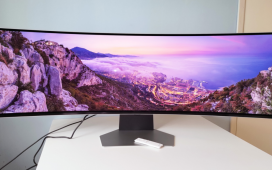Samsung Odyssey 3D G90XF
Samsung actually first teased the Odyssey 3D G90XF all the way back at CES 2024. The company didn’t say much about it after that, so I’d figured it would never see store shelves. But it’s no myth! In fact, it’s now available for pre-order from Samsung or Best Buy at $1,999.99.
The “3D” in the model’s name calls out the monitor’s lenticular glasses-less 3D technology. This new tech uses a specialized display panel layer to redirect light in a way that creates a 3D effect without 3D glasses.
But how does it look? Fantastic!
The Odyssey 3D G90XF is a 27-inch 4K (3840×2160) monitor, so it looks rather sharp. Lenticular displays like the G90XF have, in the past, suffered a distracting moiré pattern. However, modern lenticular displays like this one solve the problem with higher resolutions. It also has 3D cameras that keep track of the user’s eyes, which allows the lenticular display to make subtle adjustments to maximize the 3D effect.

Matt Smith / Foundry
And I must say, the Odyssey 3D G90XF has really nailed the core technology. Samsung didn’t want to spill its secret formula and wouldn’t tell me the specific hardware partners or tweaks it made. Whatever the details of their approach, I do think this is the best glasses-free 3D display I’ve tried yet (and I’ve tried dozens over the years).
Speaking practically, the Odyssey 3D G90XF delivers a crisp, attractive glasses-less 3D image with a convincing sense of depth and few image artifacts. The 3D effect was obvious. At full strength, I perceived that the “back” of the image was about 4 or 5 feet away while the “front” felt about a foot away. The image itself was sharp and smooth with no hitching or image artifacts.
That’s not to say it was perfect, though, and some of the traditional glasses-less 3D problems are still present. The 3D effect only works within a limited range. (Samsung recommends a range of approximately 22 to 38 inches.) The 3D effect also works best within 25 degrees of center, can degrade if you rapidly move your head, and might not work if a friend sits beside you (as eye-tracking is an essential part of the tech). This is one for true fans of 3D, then.
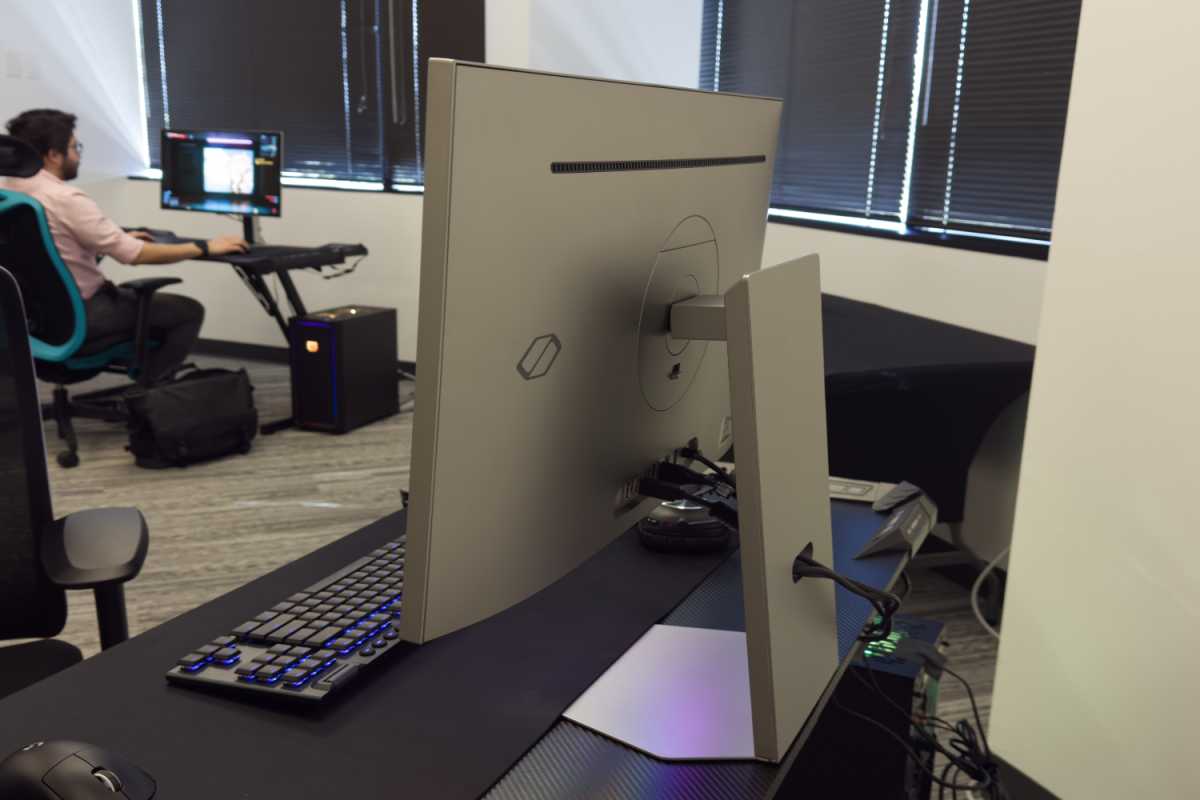
Matt Smith / Foundry
But what can you play on it? At the moment, not much. The Samsung Odyssey 3D G90XF promises compatibility with just 12 games. I tried The First Berserker: Khazan, Grand Theft Auto III, and Palworld.
Khazan was the standout. Samsung’s reps said the company worked with the game’s developer, Neople, to master the effect, and the game did provide an outstanding sense of immersion that genuinely enhanced the gameplay experience. Palworld looked fantastic in brighter scenes where its colorful characters could pop from the environment. But in darker scenes with less contrast, the 3D effect wasn’t obvious. Grand Theft Auto III‘s low-poly graphics gave the game an interesting “pop-up book” look, which I found charming, but the 3D effect felt overdone in some scenes.
Other supported games include additional GTA remasters like Vice City, plus a roster of lesser-known games, like Unstop and Zero Protocol. I liked what I saw, but it must be said: a launch slate of just 12 games isn’t much.
Perhaps knowing this, the Samsung Odyssey G90XF includes an AI algorithm that can convert some 2D video content into 3D. It only works with video—not games—that isn’t DRM restricted. Unfortunately, that means Netflix and Hulu are off the table, but it will work with YouTube videos and local files that aren’t DRM-protected. Interestingly, it also provides support for “side-by-side” 3D videos meant for VR headsets.
I watched clips from Spider-Man: Far From Home and The Matrix. The Spider-Man clip, which was originally meant for VR headsets, looked amazing with the 3D conversion adding real depth to action sequences, and the sharpness and motion clarity were better than I remember from past displays. However, the original Matrix movie clip, which wasn’t intended for 3D, didn’t always show the 3D effect convincingly. It was fine, but it didn’t do as much to enhance the experience.
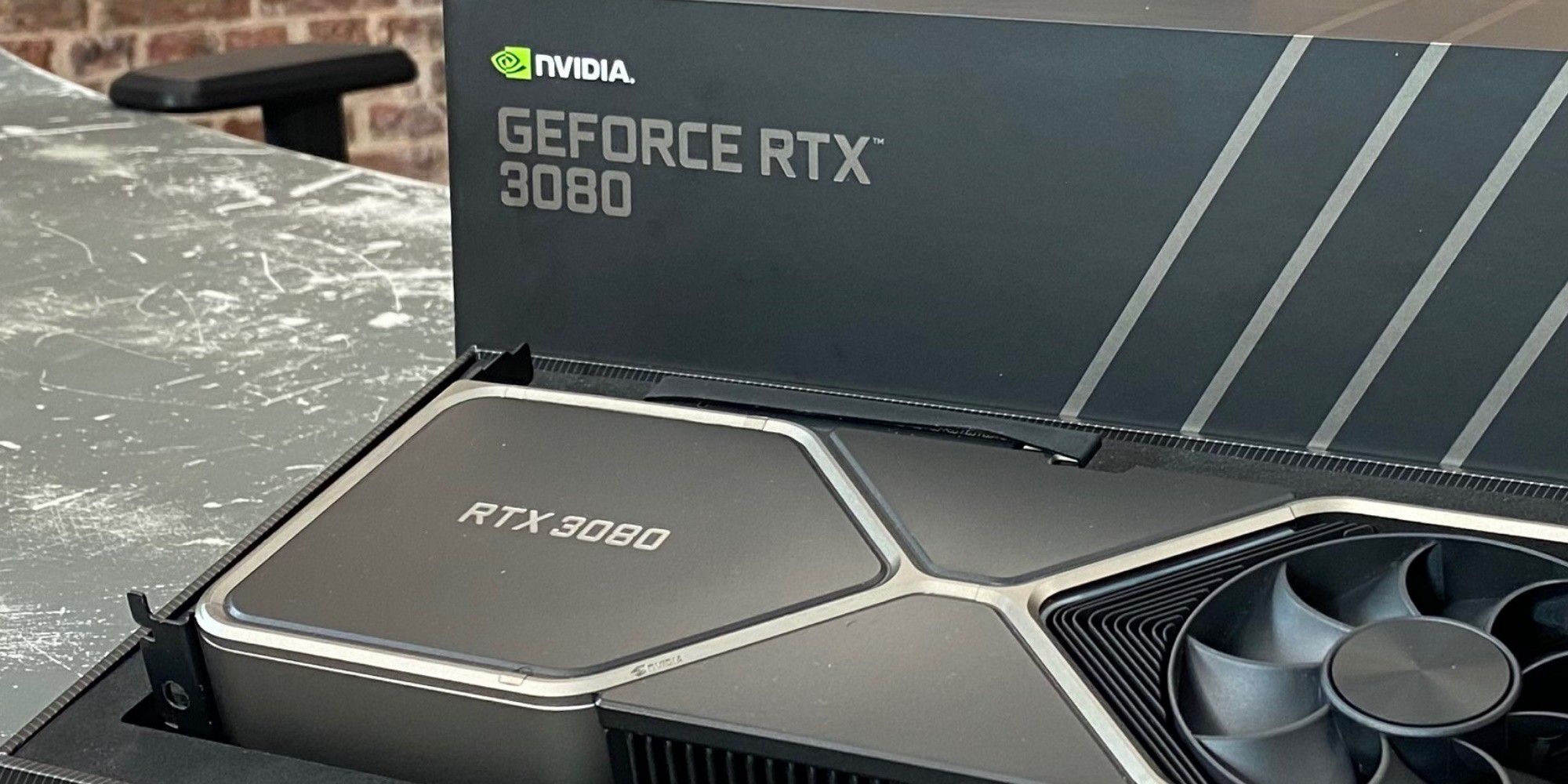
Foundry
And by the way, Samsung says the Odyssey 3D G90XF requires beefy Nvidia hardware, with the RTX 3080 as the recommended minimum. Yes, that means the 3D effect isn’t available on AMD hardware, no matter how powerful your particular card might be.
In short, the Samsung Odyssey 3D G90XF is the best version of the glasses-free 3D effect I’ve seen so far. It offers an excellent sense of immersion, lacks the obvious moiré patterns of past displays, looks reasonably crisp in motion, and is otherwise tack sharp. Yet despite all these perks, it’s hard to see it as more than an impressive tech demo.
That’s mostly due to the limited game roster. Samsung says they plan to support 50 games by the end of 2025, but I still don’t think that’s anywhere near enough. Content support has hampered past efforts to offer glasses-free 3D, including 3D televisions and Acer’s SpatialLabs 3D monitors. I suspect Samsung will run into these familiar problems.

